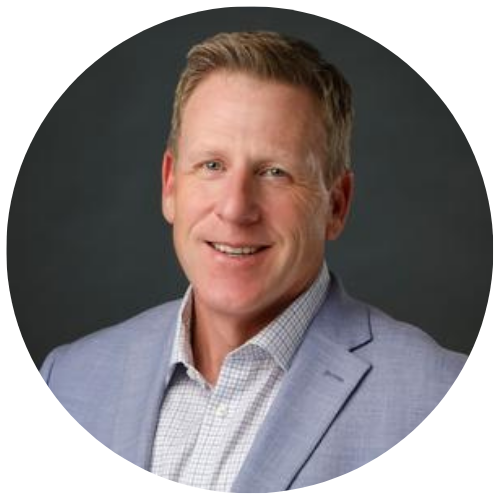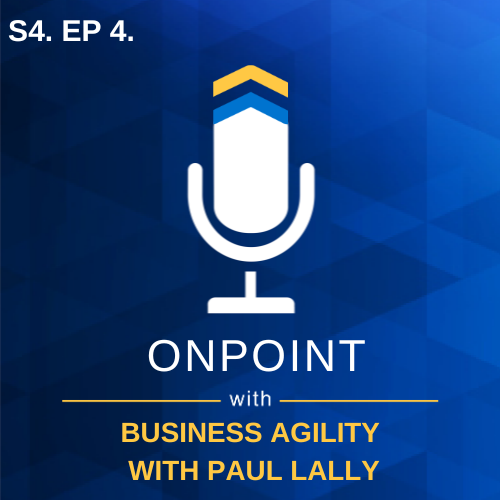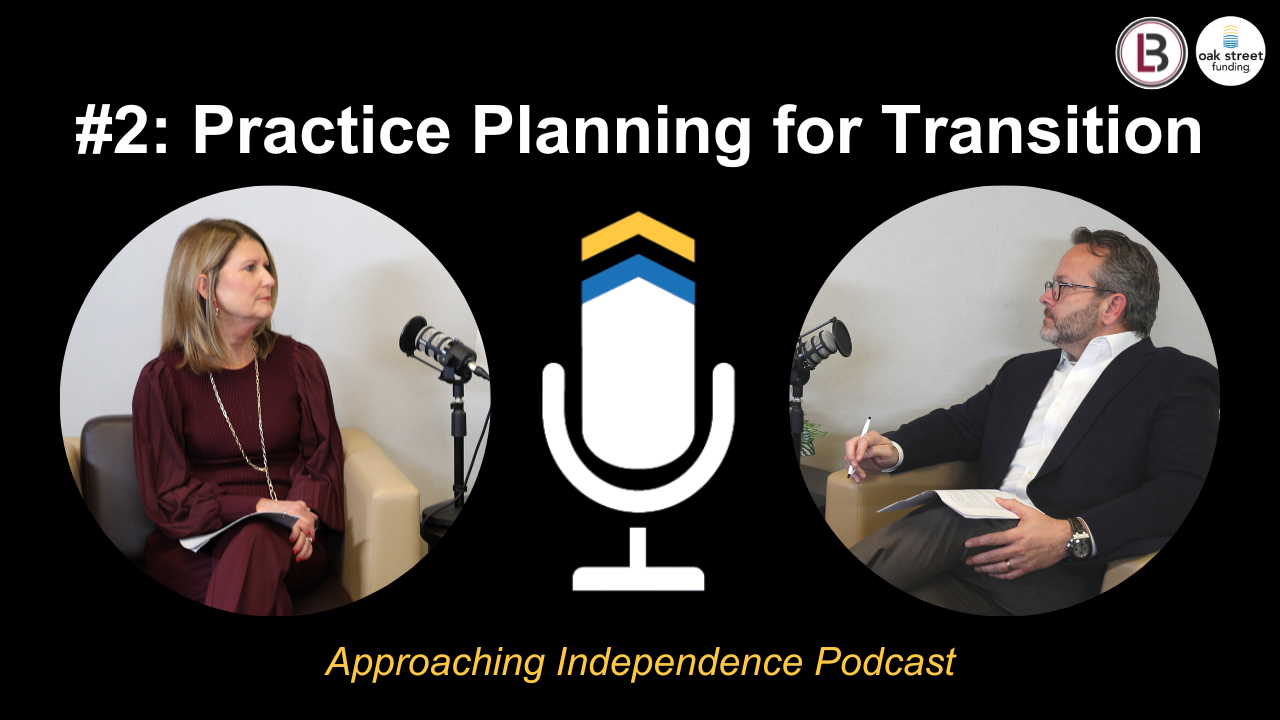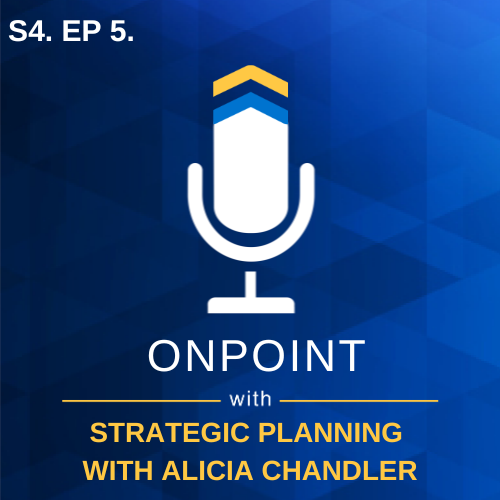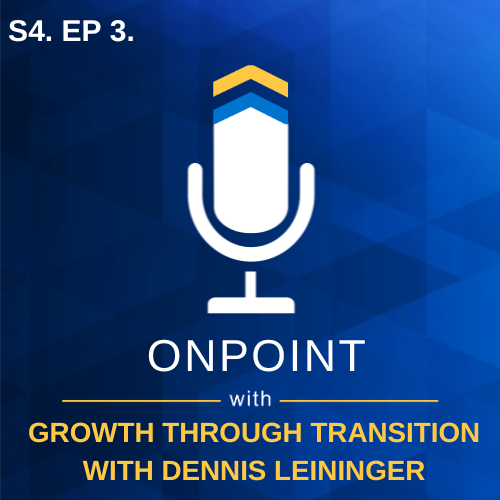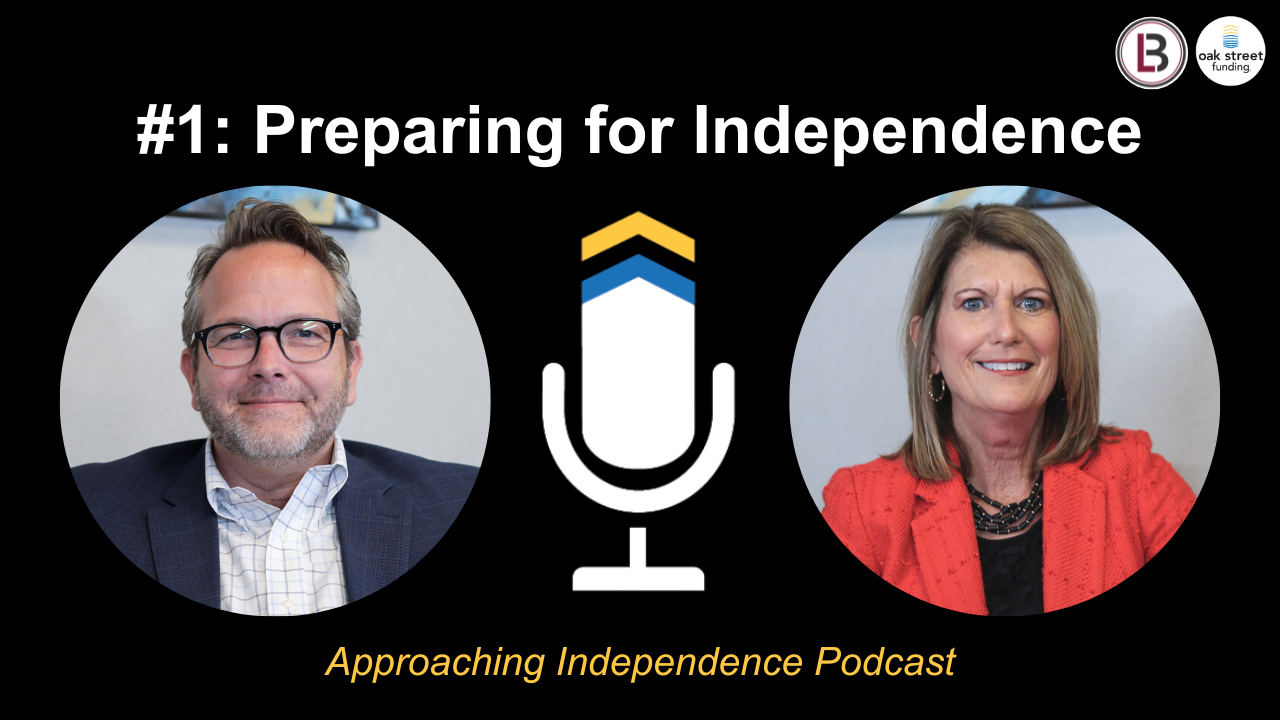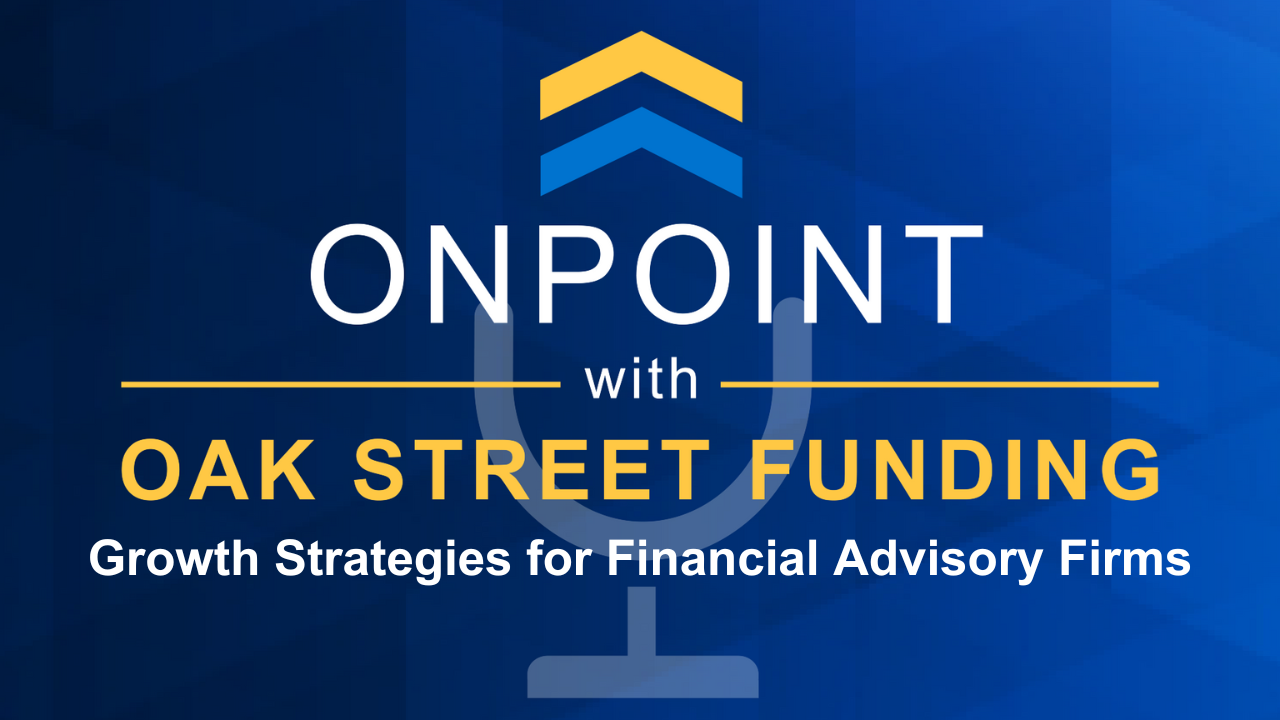S4 EP. 4 - Business Agility: Thriving in Changing Markets with Paul Lally
- 0.5
- 1
- 1.25
- 1.5
- 1.75
- 2
Bridget Haight: Hi, and welcome to OnPoint, a podcast by Oak Street Funding, where we bring research and data- backed insights to dig into the minds of industry leaders to learn how to stand out, navigate, and break through this ever- changing industry. I'm your host, Bridget Haight, and you can support this podcast by following us on Spotify, Apple Podcasts, on our website, or wherever you get your podcasts. We will be there, hanging out, talking to industry leaders, and ready to empower you to grow your business. Now, let's get OnPoint. Today, I am delighted to welcome Paul Lally to the show. Paul is principal at Wipfli, where he leads Wipfli's multidisciplinary team, offering services to the wealth and asset management industry. Leveraging more than 30 years of experience, he helps clients navigate the growth and long- term success of their business. Welcome to the show.
Paul Lally: Thank you, Bridget. Nice to be here.
Bridget Haight: So, we'll just dig right in. So let's start with going a little bit deeper into some of the questions from our recent webinar that you just filmed with our CEO and founder Rick Dennen. You talk a lot about operating a business at prime. Can you explain what that is to our viewers?
Paul Lally: Sure. So we got into this conversation at the firm some time ago, and the conversation was very intriguing because we were talking about what's... We all know high- growth businesses. Businesses are thriving because of the market. They're thriving because they're great at selling, they're just building a business on growth, driving revenue. But we started sitting back and going, " What is really a high- performing company?" You look around the names that we know, Amazon, Google, Microsoft, and these big brands. What keeps them relevant? What keeps them still top of mind? And what characteristics make up those businesses? And then how do they maintain this ability to be high performing? There's a difference between high performance and growth. High- performing businesses are just more viable, stable, sustainable, profitable for private businesses, are more valuable and more transferable. And not being the smartest guy at the firm, one of my partners said, " Well, that sounds like the businesses in its prime." And I said, " What do you mean?" He said, " It's like the prime of your life. Your prime earning year is the prime of your career." When is a business in its prime? When is it at its most viable, stable, sustainable, profitable, transferable, valuable? And what we found through our studies was it's right before a business hits maturity. And being from Philadelphia, Bridget, it makes me sick when I use this analogy, but the best analogy I give, I said, " If you look at your favorite actors who have been around for years, your favorite musicians, or your athletes," and the athlete I use is Tom Brady. Now, again, being from Philadelphia, that makes me a little ill when I say it. " But if you look at Tom Brady, though, as a professional, he started his career, he evolved his career, and then as he got older in his career, he reached this stage where he was in his prime. And he knew he was in this stage, and he knew how to evolve. He knew how to change his nutrition, change his approach to his game, his mindset because he wanted to stay in this prime stage as long as possible, which is no different than a business." If I know I'm at my most high- performing, first, I got to know I'm there. And then secondly, how do I stay there? So we call that journey the" pathway to prime" at the firm.
Bridget Haight: Okay, great. So what advice would you give to business leaders who are looking to build strong and resilient businesses for the future?
Paul Lally: Know your characteristics. And not only know your characteristics, but objectively look at your business characteristics. There's several components that we have defined that make up a prime organization. And in light of the webinar Rick and I just did, there's a tremendous amount of pressure and change going on in our daily lives, in our business lives with business owners in general. And those characteristics that make a high- performing stable company, it's transformative leadership, having a leadership team that is able to evolve and transform with these changes. It's having an optimized operating system, operational excellence in the business from front end to back end. You have modern and optimized technology in the business. You're adopting technologies, and by the way, you're using those technologies in the business. You have a compelling vision, not just a vision that's aspirational, but a vision people can rally around. They know your purpose for the vision, and you have your tactic, core vision. You're financially confident in the business, not just because you're benefiting off of the good market, but you're financially confident that you understand your revenue volatility. You understand your expense structure, you understand your profit. You understand how the business could perform over time financially and make decisions financially for the business. You have engaged people. Your people are engaged, and not just your... but the stakeholders, your clients, your customers, your internal staff, your banker, your attorney, they're all engaged in mutual success for the organization. And they're excited about it. And last is having a thriving brand. Everyone says they have a brand, but is the brand identifiable. When I say thriving, what's the value or the core values of that brand? What does that brand actually stay for? And most importantly, is your brand a differentiator in your industry?
Bridget Haight: Okay, yeah. So Paul, in the webinar that we just did with Rick, you discussed being agile, and you also discussed ways of understanding how you could be agile with understanding your data. Can you give us some tips or some programs that you use to understand your data?
Paul Lally: Sure. Data is a big word. Data is a really big word. So, I think first and foremost, understanding how much data you have, and then understanding where that data actually is, and then being able... So you hear about data warehousing or data lakes, but it's being able to pull that data together. So, first and foremost, a system where you can pull data together with different technologies. We have data professionals here at Wipfli, that they go into your system and build the connectors to be able to pull that data into one central repository. Then it's being able to scrub that data and saying, " What data is important? Is it financial data I'm looking for? Is it performance data? Is it client data? Is it staff data?" And then what we use at Wipfly is we create overlay dashboards. So we've been able to create dashboards, whether it's Power BI or other type of dashboards where I can go into our system, say I'm thinking about my client data today, I have specific key performance indicators I'm looking at for each of those, whether it's performance, or staff, or financial. And it's easy to use. It's all on one screen for me, and it moves. So I can see, " Okay, here's my green key performance indicators. Okay, here's a yellow one I got to pay attention to. Oh, this one wasn't read last month. Why is this key performance indicator red?" So it's organizing it, scrubbing it, building those KPIs around it, and then created the visual platform to actually be able to look at it. So dashboards is the key.
Bridget Haight: Great. Thanks Paul. So, a key subject that we're hearing now has to do with succession and G One, making the business profitable, but also navigating an internal Gen Two, being able to afford it. So let's start with Gen One. What are some tips for navigating a successful transition?
Paul Lally: Understanding what transition is, first and foremost. Transition, first and foremost, is how the business transitions through its lifecycle. How does it go from startup, to growth, to expansion, to the stage of prime, and stay there if you're not going mature, so understanding that. Second, transition gets confused with exit planning. You say exit to a business owner, it's a four- letter, dirty word. You want to talk about your exit plan? Yeah, call me in 20 years when I'm actually thinking about that.
Bridget Haight: Right.
Paul Lally: Transition planning is the ability to... They're taking time over a number of years to make little plans, make little decisions. So you're not waking up on a Monday morning at some point in time with no plan. Now you're making all these decisions at once, probably a very emotional time to make the decision, and you're trying to do the best what's for your business. So, transition is just that. It is the ability to think long- term over time of how I'll eventually perpetuate, but because what my business owners don't like to think about or understand, the business will transfer. It's whether it's going to be voluntary or involuntarily. So how much control you actually have over that process. So it's a process. It's a marathon, not a sprint.
Bridget Haight: I've heard this before. Thank you. And then what about Gen Two? What can they do throughout their time at the business to increase their chances of a successful transition that doesn't deplete their assets?
Paul Lally: It's what I'm about to say, and going back to your first question real quick, the question they have, " How they can successfully navigate a transition or afford a transition?" Well, if I don't plan, and I wait till the last minute, of course, my next generation is going to have the ability to buy me out. So how do you start creating those mechanisms that over time, that they can start to create the capital needed to buy you out at some point in time? And also, I tell business owners, " Don't confuse what a value of third- party strategic buyer will pay for you and what your internal staff can pay for you." You're not getting the highest, maximum strategic value. What you're getting is a fair value, but then it becomes what do you want to net out of that? So a lot of planning goes into the net number, what G2 can do, first and foremost, be curious. Be curious, not about what you do daily. Be curious about the business, be a student of the industry that you are in. Learn the industry and be curious about how the business operates. Because we've seen it oftentimes, the next generation is very good at their quote, unquote" job," but they haven't taken the time, or the leader of themselves, the G Ones themselves haven't taken the time to help the next gen learn how to be a business owner.
Bridget Haight: Okay. So what can business owners of all generations do to adapt to changing talent needs and expectations?
Paul Lally: Understand it's changing. First and foremost, understand that talent pool, the culture of the next generation is changing. We said in the webinar, there is a strong now focus on work- life balance. There is also giving that leadership... Having that leadership provide the tools to the next generation to be successful. This up- and- coming generation is very technologically savvy. I'll play with my iPhone for an hour and not be able to work it. I'll give it to my 19- year- old daughter, and she'll have it fixed in two seconds. So it's the adaptability of technology and understanding, most importantly too, how we communicate. We communicate differently, depending... And this is one of the first times we've seen in our workforce where you have boomers, and I call myself now" the lost generation" because I'm an Xer, so I'm stuck between two generations. But you have the boomers, the Xers, the Ys, the millennials, the Z, all working in this environment. So it's how do we effectively communicate with this workforce? And again, this workforce too now doesn't want to have a dictator as a leader. They want to have a collaborator. And they want to know their purpose on why they're doing what they're doing. And if they do that, what they're doing with how they progress in their career, what does that future look like, and how are they part of that future?
Bridget Haight: Okay, great. So how can businesses create a culture of innovation and continuous learning to develop their employees?
Paul Lally: Adapt the culture of innovation. It's interesting. A lot of times, business leaders in general will confuse change with innovation. Change is just adapting to what's going on. Innovation is predicting of what can happen in the future and adapting to that. So it's really looking at how is our industry being affected by change in technology? What's coming down the pipe? The big word now across industries is AI. How is AI affecting this business? You can't say, the mindset of, " This isn't going to happen to us." You can't say, " This will not affect me." It's changing not only how businesses conduct business, but I'm a firm believer that it's changing because the consumer behavior is changing. And in wealth and asset management, those consumers are your clients. The way they operate in their daily lives, it's immediate gratification, it's hyper- personalization, it's immediate digital connectivity. I said this in the webinar because that's kind of my standing line, but I say, " I hear the older generation isn't technologically savvy." And I immediately respond by saying, " My mom is 75 years old, she posts on Facebook probably more than I do, and she comments on LinkedIn posts." There is a digital connectivity there. So innovation is what's the next evolution of the technology we're using? And be aware of that. And it's all right to say, " No, I'm not adapting that." But saying no and not being educated on it is way different than being educated and making an educated business decision.
Bridget Haight: Right, right. So next question. How can businesses adapt to changing client needs and expectations?
Paul Lally: Understand the client demographic. No, really, if we're talking about the wealth management industry, as an industry where I focus my time on, you have changing demographic of the persona of the client. It used to be it's the boomers, they're our client base. But now you have this next generation that thinks of relationships differently. They think of connectivity differently, and communication differently, they think of investing differently. You have now women in investing, and what are we doing to attract more female clients to our business? So it's really understanding that persona or demographic and how do we connect with them. Yeah, I think we're in very short term, the days of sending out quarterly market reports is done because it's not personalized, it's not immediate. And I made the comment, I won't say what bank I bank with, but I can't tell you the last time I was in a bank branch unless I really... And 20 years ago, 25 years ago, people couldn't think about not going to their bank branch.
Bridget Haight: Right. Yeah. I remember my dad going every Saturday. Every Saturday.
Paul Lally: So I think it'll be a balancing act between... You'll never disintermediate the relationship. And how to use innovation and technology to enhance that relationship.
Bridget Haight: Great. How can businesses prepare for and mitigate market challenges? And then, how can they help their internal team and their clients navigate these challenges as well?
Paul Lally: Short- term tactical planning.
Bridget Haight: Okay.
Paul Lally: That's the key. It's one of the best parts of being a business owner. And I was a business owner for a number of years. One of the parts about to being a business owner is you're only accountable to really to one person, at the end of the day, you're accountable to yourself. And yes, you have staff. And the reason, as a business owner, we never want to write things down inaudible actions attached to it, because it holds us accountable. It would hold me... But that's changed. And it's not writing a fluffy, five- year strategic plan of aspirations of where I see my business and how big it's going to be. It's about what are the" what ifs" that could affect my business today. And do I have the contingency plans in place to address those? Because it's the old saying, " Having no plan is a plan." Something will happen, you're just not going to be in control of it. So it's looking from everything from how your business is generated, to your client demographic, to how your clients are brought in, to how your clients have served. So that affects your revenue, your expense structure, and your profit. So it's tying your strategy with your finances and constantly looking at those two.
Bridget Haight: Okay. So before we wrap up, do you have any final tips for business owners, especially as we head into 2024?
Paul Lally: Really objectively look at your business and say, " Is my business just high- growth because I've been benefiting from the market performance? I've been benefiting..." Or really objectively, " Am I running a high- performing company?" And the question I ask a lot of business owners that's kind of a showstopper. " If you don't show up on Monday at work and you're not coming back, what happens?" And oftentimes, we hear, Bridget, how the business ownership will transition. That's not the question that we're trying to solve. The question is, " How does this business continue to operate in the least disruptive manner?" Because a lot of times, those owners, they have a lot of knowledge that they haven't transferred about how the business operates. So, the one is, look at your business. Am I high performing? Am I as viable, stable, sustainable, and profitable as I can be? It's great to be transferable, it's great to be valuable, but they're the components of those too. Sit back and say, " Okay, over the next 24 months, what are the" what ifs" that can affect my business?" I may not want to use the plans I'm putting in place, but at least I have a plan to address this. And then looking out and saying, " What is the true future vision for my company? What's my future state? Am I doing the things I need to do today to hit that future state?"
Bridget Haight: Great, thank you for that. So at the end of the show, we like to ask a fun question. What is the best book that you have ever read?
Paul Lally: Do comic books count? Wow, for this purpose, I'll say it's one of the business books I've read. I read a book by Gary Keller. I picked it up at the airport in one of the shops. It looked cool. So I bought it. It was called, " The ONE Thing." And as a business leader, as somebody that's responsible for people, and somebody that oftentimes, you come in, and the day you expected is not the day you're going to have in business. What the book, "The ONE Thing," drove home for me is we are inundated with all these different things. We got to do all these different things we want do. Step back and do one thing, get that one thing done, and then move on. Because if you spend the time quietly focusing on the one thing, you'll put your best energy towards that. So I would say" The ONE Thing" by Gary Keller was the best business book. I read all the books about being business leaders and all that. It was just so normally written that I could understand it. Okay, I got to wake up today and just do the one thing I want to do.
Bridget Haight: Do the one thing. Well, what was your favorite comic book?
Paul Lally: I'm a Marvel person, so yeah. And I'll go back to Mad Magazine back in the day.
Bridget Haight: I've got to inaudible.
Paul Lally: But then, I got to laugh once in a while too.
Bridget Haight: Absolutely. Paul, thank you so much for joining us.
Paul Lally: Thanks, Bridget. Appreciate it.
Bridget Haight: Thank you all for listening to OnPoint, a podcast by Oak Street Funding, where we bring research and data- backed insights to dig into the minds of industry leaders, to learn how to stand out, navigate, and break through this ever- changing industry. I'm Bridget Haight. Tune in next time wherever you listen to podcasts as we get OnPoint. Don't forget to subscribe and leave us a review. Thanks.
DESCRIPTION
Today I am delighted to welcome Paul Lally to the show! Paul is a Principal at Wipfli where he leads Wipfli’s multi-disciplinary team offering services to the wealth and asset management industry. Leveraging more than 30 years of experience, he helps clients navigate the growth and long-term success of their business. Paul discusses businesses operating at PRIME, being agile for a changing world, and building transition plans way before someone is ready to exit. He goes in depth on how to manage KPI's, and continues the conversation from his webinar with Oak Street Funding Founder and CEO, Rick Dennen.
Today's Host
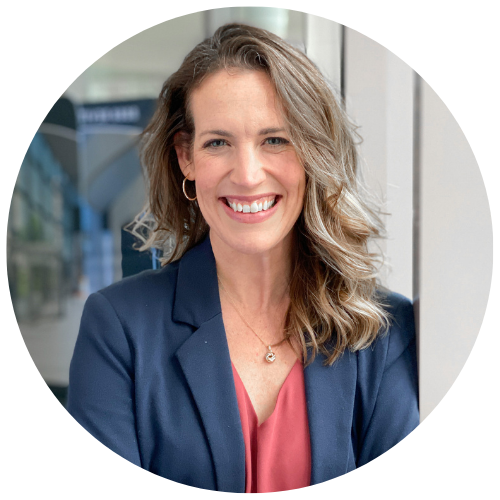
Bridget Haight
Today's Guests
